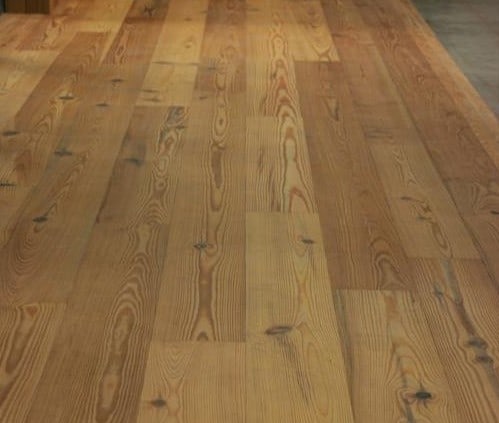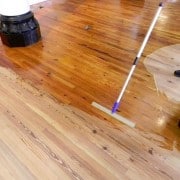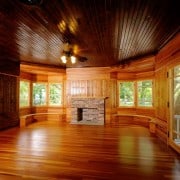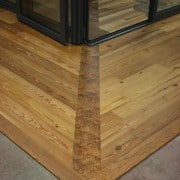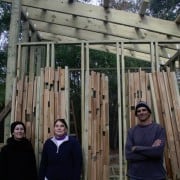Reclaimed Wood Floors, Concrete, and Water
In the antique wood floor industry we often hear the comment that reclaimed wood flooring never needs acclimation. Unfortunately this is not the case. The high resin content of antique Longleaf pine diminishes the width changes driven by moisture fluctuations but does not eliminate them. Moisture concerns need to be addressed when using heart pine wooden flooring just as with other wooden floors especially if the subfloor is concrete.
Let’s start by listing a few observations
-Wood floors are often installed over concrete subfloors.
-The majority of wood floor complaints are moisture related.
-Untreated concrete readily absorbs, conducts, and emits water.
The combination of concrete and wood flooring calls for planning before the installation begins to avoid problems during the lifetime of the floor.
One of the first questions might be ’is the concrete dry enough now?’ Moisture meters or testing water vapor emission from the surface of the concrete can indicate if the concrete is wet. In some cases these tests are not reliable indicators of conditions that will lead to a successful wood flooring installation. Devices that measure the interior relative humidity within the concrete have been used in Europe for some time and are now often used here. If the moisture level is too high consider installing a vapor barrier or a penetrating sealer designed for use under wood flooring.
Concrete that is dry now may be exposed to water later. On-grade concrete can absorb water if exterior surface water accumulates or if the soil moisture levels increase. Once the water is introduced into concrete it travels to affect adjacent areas. If a vapor barrier was not installed the moisture can cause problems with an existing wood floor installation.
Non absorbing cushion such as closed cell foam is usually used under floating floors. Using porous padding material under floating floors introduces the possibility of retaining moisture if excess water is temporarily present.
Leaks from plumbing, appliances, roofs, or other building sources can result in wet wood floors. The National Wood Flooring Association suggests removing the water and drying a flooded floor promptly. For more details refer to the NWFA publication C200, ‘Problems Causes and Cures’. Some floors can not be saved. If the concrete under the floor has been wet it is important to verify that it has dried out before replacing a floor.

